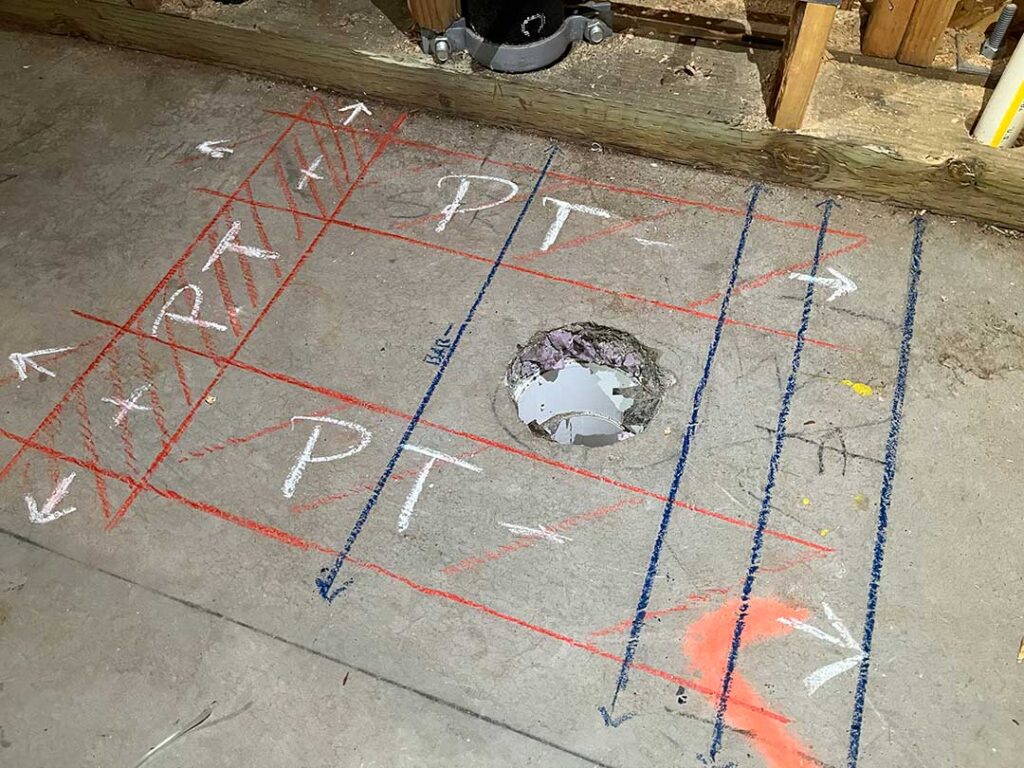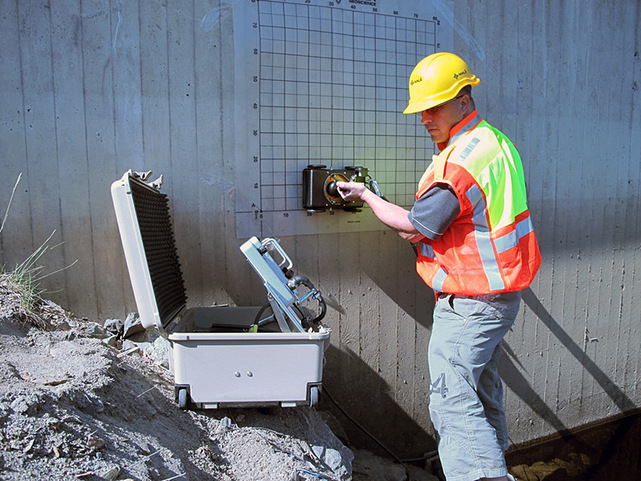Advanced Concrete Scanning Techniques: Ensuring Structural Stability
Advanced Concrete Scanning Techniques: Ensuring Structural Stability
Blog Article
Elevate Your Building Process With the Strategic Insights of Concrete Scanning for Enhanced Performance
In the world of contemporary building and construction methods, the pursuit for effectiveness and accuracy is vital. Embracing ingenious innovations has actually come to be a foundation for attaining these goals. One such technology that has reinvented the building and construction market is concrete scanning. By using the tactical insights supplied by concrete scanning, building specialists can unlock a realm of enhanced efficiency and structured procedures. The implications of incorporating concrete scanning go much past surface-level benefits, using an extensive influence on project results.

Advantages of Concrete Scanning
Enhancing task performance and safety and security, concrete scanning provides a non-destructive method for discovering covert things within concrete frameworks. By making use of modern technologies such as ground-penetrating radar (GPR) and concrete x-ray imaging, building and construction teams can properly locate rebar, post-tension wires, electric avenues, and various other blockages before drilling, cutting, or coring right into concrete.
The benefits of concrete scanning are various. It lessens the danger of unintentional damage to essential structural elements, reducing the chance of expensive repair work and project delays. Second of all, it improves employee security by giving real-time understandings into the area of covert threats. Building sites can be intricate atmospheres, and recognizing what lies below the surface area can avoid injuries and accidents.
In addition, concrete scanning advertises overall project effectiveness by simplifying workflows and stopping rework. By determining prospective issues early, teams can change their strategies proactively, saving time and resources in the lengthy run. Basically, the fostering of concrete scanning technologies is a calculated financial investment that pays rewards in regards to performance, safety, and cost-effectiveness.
Innovation Combination for Effectiveness
Concrete scanning's capacity to enhance operations and improve job efficiency can be further optimized through calculated integration of sophisticated innovations. By integrating Structure Information Modeling (BIM) software application right into concrete scanning procedures, construction teams can achieve a greater degree of precision and control. BIM permits for the development of 3D models that give detailed insights right into the job, enabling better decision-making and reducing the chance of mistakes. Additionally, the integration of Augmented Truth (AR) innovation with concrete scanning can enhance on-site visualization, permitting task supervisors and workers to overlay electronic info onto the physical environment in real time. This can assist in much more specific positioning of aspects and improve interaction among employee. The usage of drones for aerial surveys in combination with concrete scanning can quicken data collection and analysis, making it possible for quicker decision-making and progress monitoring. Overall, the critical integration of these modern technologies can dramatically enhance efficiency and efficiency in building jobs.
Staying Clear Of Pricey Mistakes
Exactly how can meticulous attention to information throughout concrete scanning procedures assist building and construction groups in preventing costly errors? Concrete scanning plays an essential function in determining potential problems prior to they intensify into expensive mistakes. By utilizing sophisticated scanning innovations such as Ground Permeating Radar (GPR) and electromagnetic induction, construction teams can accurately spot rebar, utilities, voids, and other blockages within concrete frameworks. This level of precision enables project supervisors to make educated decisions relating to the design and style of their construction strategies, lowering the threat of unintended damage to vital facilities during the building procedure. Furthermore, concrete scanning aids in ensuring architectural stability by identifying weak points or problems in the concrete early, enabling for timely fixings and adjustments. By proactively addressing these concerns, building groups can stay clear of expensive errors such as rework, hold-ups, or safety dangers that may arise from neglected disparities in the concrete framework. Ultimately, purchasing comprehensive concrete scanning procedures verifies to be a cost-effective strategy in the future, saving both time and resources while enhancing overall job performance and top quality.
Enhancing Project Monitoring
Meticulous focus to detail during concrete scanning processes not only assists in preventing expensive mistakes yet additionally lays a strong structure for efficient project administration in building and construction undertakings. By integrating concrete scanning technology into job monitoring strategies, building teams can simplify process, boost interaction, and guarantee that tasks remain on track.
Concrete scanning provides important understandings into the structural integrity of existing aspects, enabling project managers to make enlightened choices pertaining to style adjustments or building sequences. This proactive method minimizes the threat of unexpected delays or rework, ultimately conserving time and sources. Furthermore, the data obtained from concrete scanning can be integrated right into Structure Details Modeling (BIM) systems, making it possible for get redirected here real-time partnership and control amongst numerous stakeholders.
In addition, concrete scanning aids job managers identify possible risks or challenges prior to they escalate into bigger issues, advertising a much safer work setting for all entailed. With improved presence and accuracy offered by concrete scanning technology, project managers can properly prepare, keep an eye on, and perform building and construction useful link jobs with greater effectiveness and confidence.
Maximizing Efficiency
One essential aspect of making the most of performance is via the adoption of concrete scanning modern technology. By using ground-penetrating radar (GPR) and other scanning techniques, construction teams can precisely locate rebar, avenues, and other subsurface aspects, reducing the threat of pricey errors and delays throughout excavation and drilling.
Furthermore, accepting Building Information Modeling (BIM) software program can significantly enhance performance by producing detailed 3D versions that boost task visualization and control among different trades. BIM enables much better clash discovery, allowing problems to be identified and dealt with before construction even begins, conserving time and resources over time.
Executing a lean building method, which concentrates on eliminating waste and enhancing performance throughout all project phases, is one more effective technique for maximizing performance. By fostering partnership, communication, and constant renovation, construction groups can function much more cohesively in the direction of attaining job goals in a productive and structured fashion.
Conclusion
To conclude, the critical execution of concrete scanning in the building and construction procedure uses many benefits, including increased efficiency, price financial savings, improved project administration, and improved performance. By incorporating this innovation, building and construction groups can avoid costly her explanation mistakes, streamline their procedures, and maximize their overall job result. Concrete scanning is a useful tool that can raise the construction procedure and result in even more profitable and successful outcomes.

Report this page